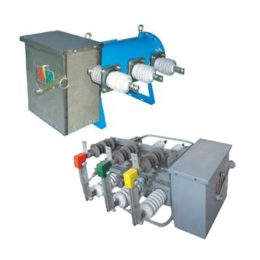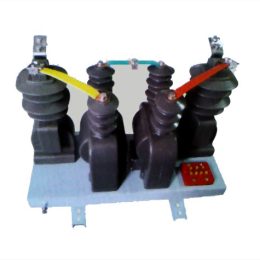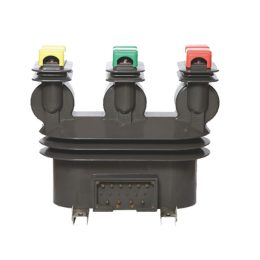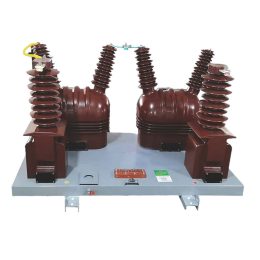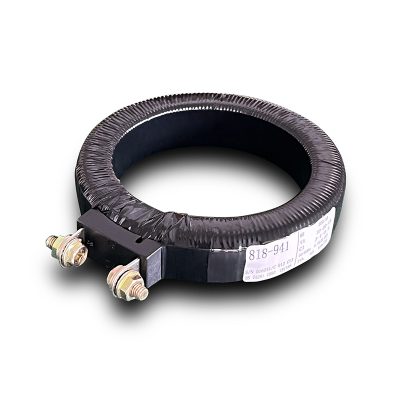
Indoor MR Dry-Type Current Transformer Accurate Measurement, Relay Protection
Description The MR dry-type current transformer is designed for indoor use with a fully enclosed plastic housing, making it ideal for energy metering, current measurement, and relay protection in power systems operating at 50Hz or 60Hz. Compliant with IEC60044-1:2003 and GB1208-2006 standards, this transformer ensures accurate performance in low-voltage applications, supporting primary currents from 30A […]
Description
The MR dry-type current transformer is designed for indoor use with a fully enclosed plastic housing, making it ideal for energy metering, current measurement, and relay protection in power systems operating at 50Hz or 60Hz. Compliant with IEC60044-1:2003 and GB1208-2006 standards, this transformer ensures accurate performance in low-voltage applications, supporting primary currents from 30A to 5000A and secondary currents of either 5A or 1A. The transformer features a varnish-treated winding, providing protection against moisture and ensuring long-term reliability.
With a maximum voltage rating of 0.72kV and an operating frequency range of 50Hz to 60Hz, the MR current transformer offers high accuracy, with classes of 1.0 and 3.0. Its short-time thermal current rating is Ith = 60 × Ih, ensuring safe operation even under transient conditions. The MR dry-type current transformer is built to maintain accuracy and prevent saturation during short-circuit conditions, making it a dependable choice for precise current measurement and system protection.
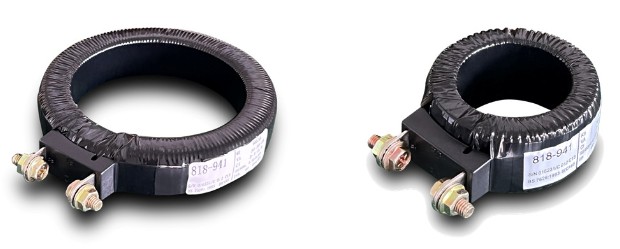
Technical Data of MR dry type curent transformer
The MR dry-type current transformer offers reliable and accurate performance with the following technical specifications:
- Rated Primary Current: 5A to 5000A
- Rated Secondary Current: 5A or 1A
- Rated Voltage: 0.72kV
- Rated Frequency: 50Hz or 60Hz
- Rated Load: 1VA to 30VA
- Accuracy Class: 0.5, 1.0, 3.0
- Rated Safety Factor: FS ≤ 5
Function of Current Transformers
Like any other transformer, a current transformer (CT) consists of a primary winding, a core, and a secondary winding. While some transformers (including current transformers) may use an air core, the basic structure remains similar. The key difference between a current transformer and a standard voltage transformer lies in their operating principles.
- A current transformer operates with a constant current supply, meaning the primary current passing through the CT is typically constant, or its magnitude is known and predictable.
- In contrast, a voltage transformer operates with a constant voltage supply, where the voltage across the transformer remains stable, and the current changes based on the load.
This distinction is significant, as it reflects the specific function of each type of transformer within electrical systems—current transformers are primarily used for current measurement and protection, while voltage transformers are used for voltage measurement.
Operating Principle of Current Transformers
The operation of a current transformer is based on electromagnetic induction. The core principle behind the current transformer’s function is rooted in Faraday’s law of electromagnetic induction, which states that a changing magnetic field induces an electromotive force (EMF) in a closed loop.
A current transformer typically consists of the following key components:
- Core: A closed-loop magnetic core is used to channel the magnetic flux generated by the current passing through the primary winding.
- Primary Winding: The primary winding of a current transformer has very few turns, often just a single turn, and is inserted in series with the line carrying the current to be measured. Essentially, the entire current flowing through the line passes through the primary winding.
- Secondary Winding: The secondary winding has many more turns than the primary winding and is connected to the measuring instruments or protection circuits. It is designed to produce a scaled-down current that is proportional to the primary current.
When the primary current flows through the CT, it generates a magnetic flux within the core. This flux then induces a current in the secondary winding, which is proportional to the primary current. The current in the secondary winding is typically much lower in magnitude, making it suitable for measuring devices and protection systems, where such scaled-down signals are required.
Outline and Dimensions MR dry type curent transformer
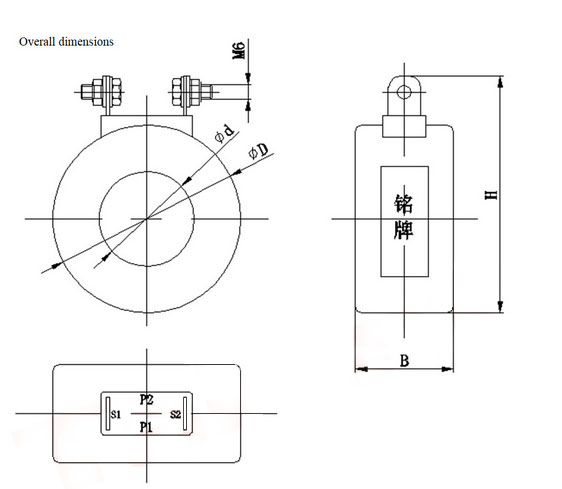
| Type | ΦD | Φd | B | H |
|---|---|---|---|---|
| MR-28 | 76 | 28 | 37 | 98 |
| MRT-40 | 80 | 41 | 41 | 102.5 |
| MR-42 | 76 | 42 | 36 | 105.5 |
| MR-45 | 77 | 45 | 36 | 106 |
| MR-60 | 93 | 60 | 27 | 116 |
| MRT-70 | 119 | 70 | 42 | 142 |
| MR-85 | 124 | 85 | 28 | 146 |
| MR-125 | 157 | 125 | 28 | 188 |
Technical FAQs for MR dry type curent transformer
1. What is the primary application of the MR Dry-Type Current Transformer?
The MR current transformer is used for current measurement, energy metering, and relay protection in low-voltage power systems.
2. What are the main features of the MR Dry-Type Current Transformer?
It offers a varnish-treated winding for moisture protection, high accuracy, and a wide range of primary currents (5A to 5000A).
3. What standards does the MR Dry-Type Current Transformer comply with?
It complies with IEC60044-1:2003 and GB1208-2006 standards, ensuring reliable performance and safety.
4. Can the MR Dry-Type Current Transformer be used outdoors?
No, the MR transformer is designed for indoor applications only.
5. What is the maximum voltage rating of the MR Dry-Type Current Transformer?
The transformer operates with a maximum voltage rating of 0.72kV, making it suitable for low-voltage applications.
- Instrument Transformer Fault Handling: A Technical Guide
- 3 Voltage Transformer Faults and Solutions: Ensuring Accurate Measurement and Protection
- Working Principle of Zero-Sequence Current Transformers
- Analysis and Troubleshooting of Common Issues with Current Transformers
- Analysis of the Impact of Incorrect CT S1 and S2 Connections and Reversed Input Lines
- Common Fault Handling for Current and Voltage Transformers
